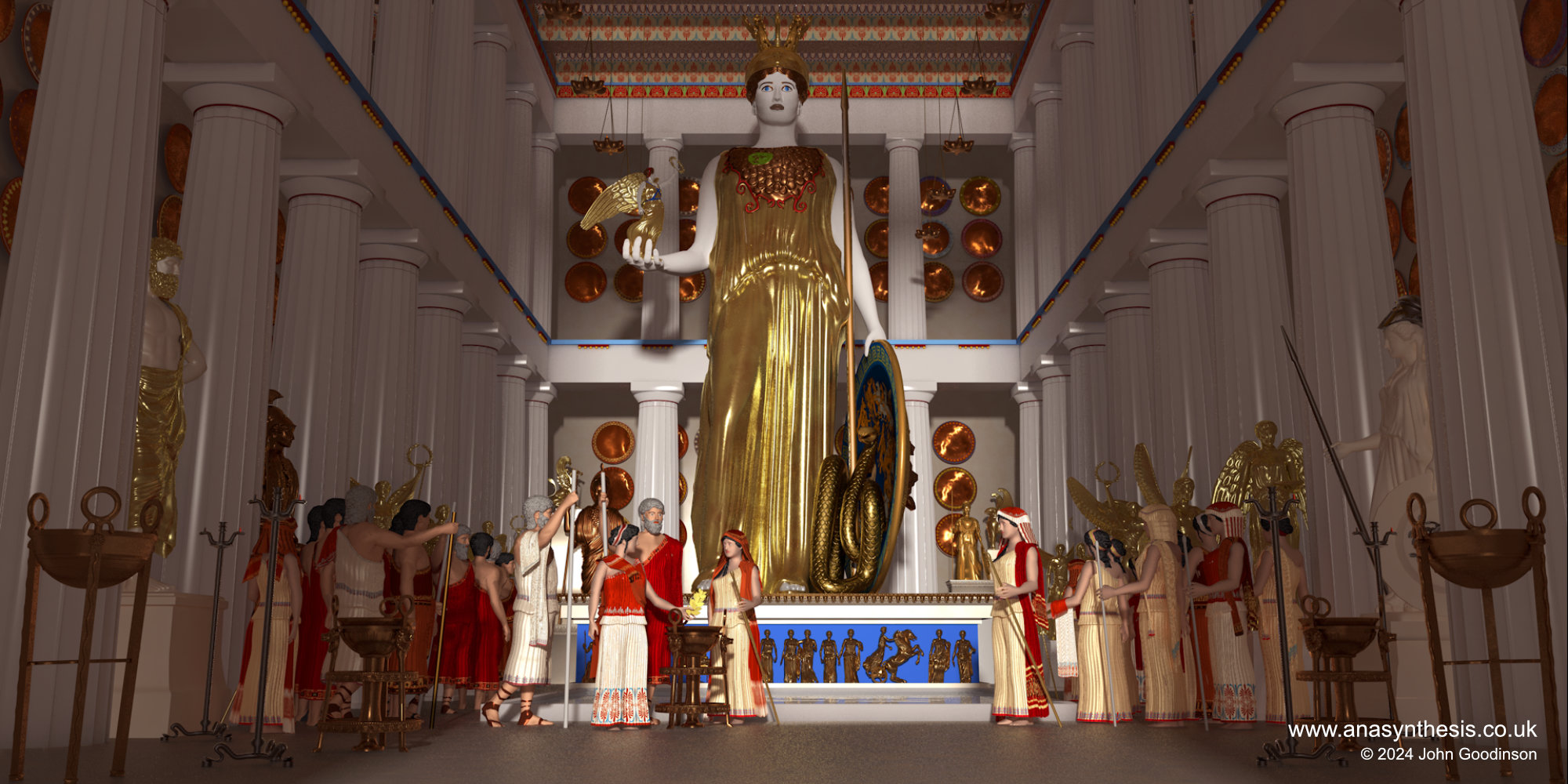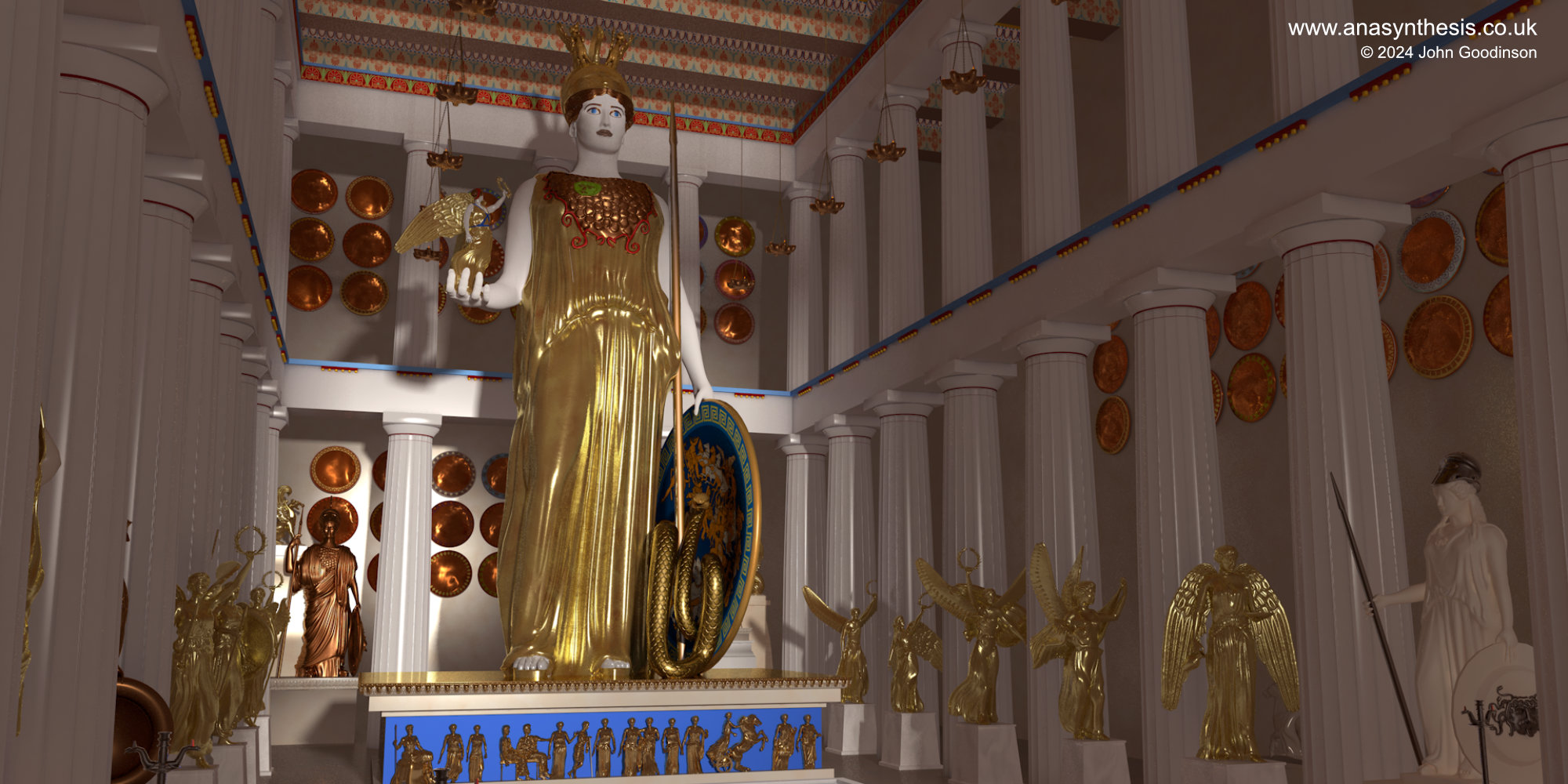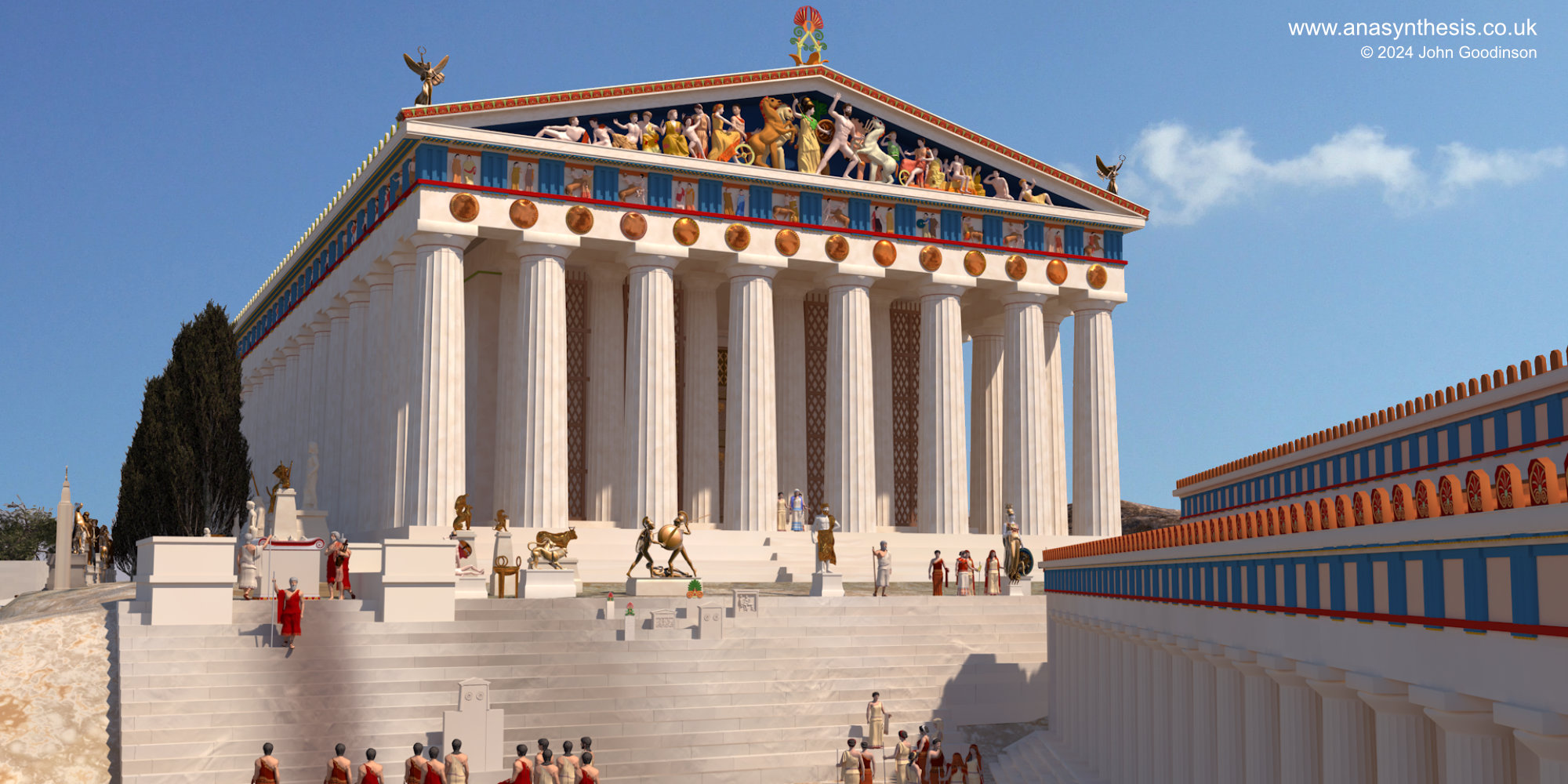The interior of the Parthenon was packed with treasures, relics, cult equipment, and - of course - Pheidias' great chryselephantine sculpture of the goddess Athena. While Pheidias' impressive statue of the deity formed the visual and spiritual heart of the temple, Athena was not alone. Rather, she was attended by a veritable flock of golden nikai - images of winged victory - that served as a testament to Athens' wealth, a symbol of her martial prowess, and the proper
entourage for Athena in her sacred home.
The dedication of these Nikai seems to have begun immediately before the Peloponnesian War (432/1-405/4 B.C.E.); the first extant evidence for a golden nike being dedicated comes from a decree of 434 B.C.E., perhaps in connection with Athens' victory over the Samian rebels in 439 B.C.E.. Dedication of these statues continued well into the fourth century; the last extant evidence for golden Nike being dedicated comes from the Athenian treasury lists of 374/3 B..C.E.
Some scholars have pointed to a connection between dedication of these Nikai and important Athenian naval victories and this makes sense: victories at sea were often accompanied by the capture of enemy ships, slaves, tackle, and other precious spoils which the goddess was entitled to share.
The purpose of these golden Nikai was multifaceted. On one hand, these statues were seen as simple tithes: the dues owed to the patron goddess of the city. On the other hand, these statues were physical repositories for wealth and could (and were) melted down in times of financial crisis for the good of the polis and its military forces.
The nikai served this purpose well both physically and symbolically. On one hand, as shaped bullion, these statues were literally worth their weight in gold. On the other hand, as symbolic images of victory, these statues embodied the grace and protection of the Athena and served to both inspire and reflect the goddess's favor in all contests, especially those of war. The treasury lists and other epigraphical evidence give a very clear picture of the amount of gold fixed in these images: around two talents. This is just under 55 kg of gold per statue.
At present market prices (24.29 GBP per gram) each of these nikai would have been worth over 1.3 million British pounds.
What did these statues of nike look like? Here, the archaeology can help. Reconstruction of the height of the figures can be based on the weight preserved in the epigraphical evidence. The Nikai were probably slightly over life - about 2 m - and made of bronze onto which gold "foil" and other golden objects were fixed.
The bronze cores of the statues were made of separate pieces - common practice for fifth and fourth century bronze casters - which could be easily disassembled for weighing and inspection by the treasurers of Athena. As for their style, the Acropolis was packed with images of Nike, so there would have been no shortage of models. Moreover, since these statues were dedicated over time we can probably best imagine a wide range of nike types as paradigms. The Nike held in the hand of Pheidias statue of Athena is one. The famous Nike of Paionios, dedicated in Olympia by Athenian allies in the middle 420s B.C.E., is another.
Regardless of their particular appearance, there can be little doubt that these stunning, gilded personifications of victory would have made stunning additions to the luxurious interior of Athena's most important sacred building at the heart of the Athenian Acropolis.
NIKE IS GOLDEN
Contacts
John Goodinson Artist/designer/illustrator
Christina Jansen Photographer
Phenomenists Internet Agency/ISP
The British Museum London England
The Acropolis Museum Athens Greece
Maxon Software Developer
Our affiliate partner
Theran Press is the academic publishing imprint of Silver Goat Media. Theran is dedicated to authentic partnerships with its academic associates, to the high quality design of scholarly books, and to elite standards of peer review. Theran seeks to liberate intellectuals from the confines of traditional academic publishing. Theran authors are authorities and revolutionaries in their respective fields.
Theran encourages new models for generating and distributing art, science, and knowledge. For our creatives. For our communities. For our world.
Our Hosting Partner
Phenomenists Internet (ISP) was founded in 2000, to meet a growing demand for cost-effective and
reactive internet services, Phenomenists have provided the hosting services and support for all our online projects since 2008. John Goodinson is a member of the creative team and has worked with Phenomenists since 2008.
